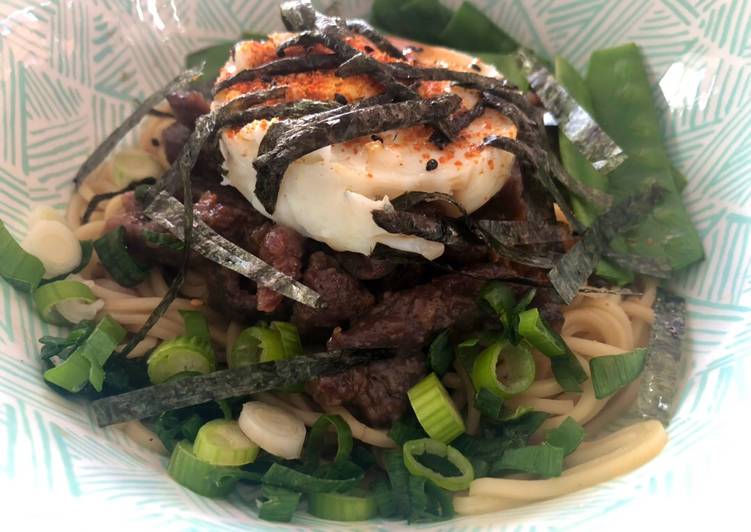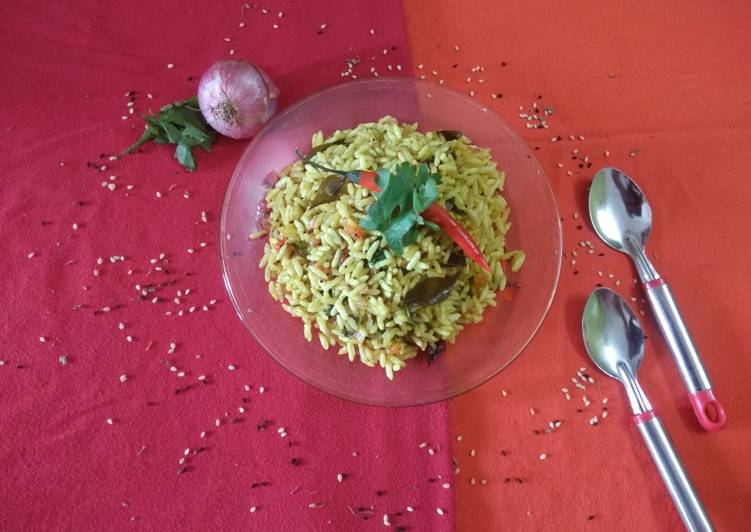
Hello everybody, I hope you’re having an incredible day today. Today, I’m gonna show you how to make a special dish, mie tahu siram (bean curd with noodles). One of my favorites. For mine, I am going to make it a little bit tasty. This is gonna smell and look delicious.
Mie Tahu Siram (Bean Curd with Noodles) is one of the most popular of recent trending meals in the world. It’s simple, it is fast, it tastes delicious. It is appreciated by millions every day. Mie Tahu Siram (Bean Curd with Noodles) is something that I’ve loved my entire life. They are fine and they look fantastic.
Chinese Noodles with Spicy Szechuan Bean Curd. From Chinese fried bean curd sandwiches or braised bean curd with mushrooms to drunken noodles and shredded pork with bean curd, discover new ways to cook with bean curd right here. Mie kuah, literally "noodle soup", or also known as mie rebus/mi rebus (Indonesian spelling) or mee rebus (Malaysian and Singaporean spelling), literally "boiled noodles", is an Indonesian noodle soup dish, and popular in Maritime Southeast Asia countries such as Malaysia, and Singapore The dish consists of sliced tahu goreng (fried tofu), lontong (rice cakes), lentho (fried black-eyed pea patty) or sometimes replaced by perkedel (potato or cassava patty cakes), fresh bean sprouts, fresh lettuce, yellow noodles, and krupuk crackers, served in savoury beef stew, garnished with fried onions, and sambal chili sauce. Essential accompaniments are a spicy, vinegary chili sauce, originally made with red fermented bean curd and distantly similar in taste to Sriracha sauce, and a distinctive brown sweet bean sauce or hoisin sauce for dipping.
To begin with this recipe, we must prepare a few ingredients. You can have mie tahu siram (bean curd with noodles) using 11 ingredients and 2 steps. Here is how you cook that.
The ingredients needed to make Mie Tahu Siram (Bean Curd with Noodles):
- Get 250 gram eeg noodles, covered with hot water and drained
- Get 7 pieces fried been curd, chopped
- Make ready 150 gram bean sprouts, blanched, drained (optional)
- Get 1 tablespoon sliced Chinese parsley
- Make ready Fried shallots for garnish
- Get Sweet Soy Sauce:
- Prepare 2 tablespoon sliced fried garlic
- Take 3 bird's eye chilli, thinly sliced
- Get 110 cc hot water
- Take 4 tablespoons sweet soy sauce
- Take to taste Salt, sugar and vineger
Dijamin makanan ini menjadi tidak membosankan. Resep Masak Tahu Tempe ini antara lain berisi: Tahu lapis udang. This dish is so well accepted, it has been made into fusion food of other nationalities in the Southeast Asian Region. It is called mee kari widely in Malaysia, curry mee in northern part of the Malaysia, and mi kari or mie kari in Indonesia (with a local variant called mi aceh in the province of Aceh).
Instructions to make Mie Tahu Siram (Bean Curd with Noodles):
- For the Sauce: Mix all the ingredients for the sauce, don't forget to taste 🤔
- How to serve: Arrange the noodles in a bowl or plate, put the bean curd, bean sprouts and sliced Chinese parsley on the noodles. Cover with sauce. Add crackers and fried shallots.
This dish is so well accepted, it has been made into fusion food of other nationalities in the Southeast Asian Region. It is called mee kari widely in Malaysia, curry mee in northern part of the Malaysia, and mi kari or mie kari in Indonesia (with a local variant called mi aceh in the province of Aceh). House special fried noodle served with pickles and prawn crackers. Mini Indonesian Rijsttafel rice with combination of "Empal" beef, "kering tempe", "urap", oseng tahu tempe, teri medan, pickles and sliced omelet. Mixed fried bean curd and bean sprout served with house special sauce and.
So that’s going to wrap it up for this exceptional food mie tahu siram (bean curd with noodles) recipe. Thank you very much for reading. I am confident that you will make this at home. There’s gonna be more interesting food at home recipes coming up. Remember to bookmark this page in your browser, and share it to your loved ones, friends and colleague. Thank you for reading. Go on get cooking!

